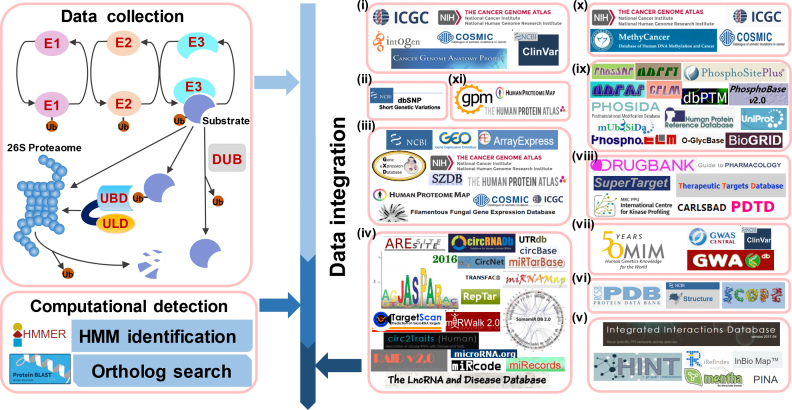Figure 1.
The procedure for the construction of the iUUCD 2.0 database. First, we searched PubMed to collect experimentally identified UB/UBL regulators. Then, we classified known regulators into distinct families and constructed HMM profiles for each family if available. For families without HMM profiles, we also conducted an orthologous search to ensure data integrity. In addition to basic annotations, we further mapped all regulators in eight model organisms, especially in Homo sapiens, to nearly 70 public databases that covered each of 11 aspects: (i) cancer mutations, (ii) SNPs, (iii) mRNA expressions, (iv) DNA and RNA elements, (v) PPIs, (vi) protein 3D structures, (vii) disease-associated information, (viii) drug-target relations, (ix) PTMs, (x) DNA methylation and (xi) protein expression/proteomics.

